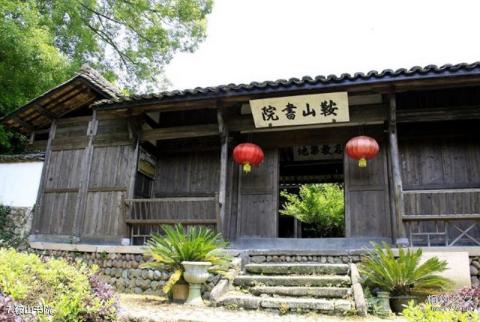
Introduction to Anshan Academy: In order to achieve the purpose of staying away from the hustle and bustle of the world and seeking the artistic conception of reading, ancient academies often built academies in quiet mountains. Anshan Academy was built during the Wanli period of the Ming Dynasty and has a history of more than 400 years. The academy covers an area of more than 700 square meters, and its interior design has three entrances. The first and second entrances are five-bay bungalows, and the rear entrance is a pavilion-style three-bay house. Except for the pavilions, which are built on the top of a hill, the rest are of a bucket-type wooden frame structure, with a suspended top and tiled yin and yang paved roofs. There is a stone step in the middle outside the first entrance door. Inside the door and between the left and right corridors, there are patios, flower piers, secondary piers, and a few rooms for the concierge and guest rooms. The teaching place is located in the Ming and Second rooms of the second entrance, and the left and right rooms of the second room are divided into five rooms respectively: Tian, Di, Xuan, Huang and study rooms. The desks placed by predecessors are still well preserved. The rules of the academy established are vaguely identifiable. Zheng Binghou, a Jinshi in the Ming Dynasty, was the number one scholar in the 32nd year of Wanli in the Ming Dynasty. Yang Shouqin, a scholar from the Siming Dynasty, once studied and taught here. It is said that in the 30th year of Wanli in the Ming Dynasty (AD 1602), Yang Shouqin, a scholar from Ningbo, traveled to Anshan Academy in Changlian Village. Seeing the beautiful scenery here, he stayed at the academy to teach and give lectures. In the 32nd year of Wanli in the Ming Dynasty, Yang Shouqin went to Beijing to take the exam and won the top prize in high school. The villagers were overjoyed when they heard the news. They hung red lanterns from house to house, posted happy couplets, and set off firecrackers. It was very lively. Later, he stayed in Beijing to work, and he still kept in touch with the Changlian folks.
